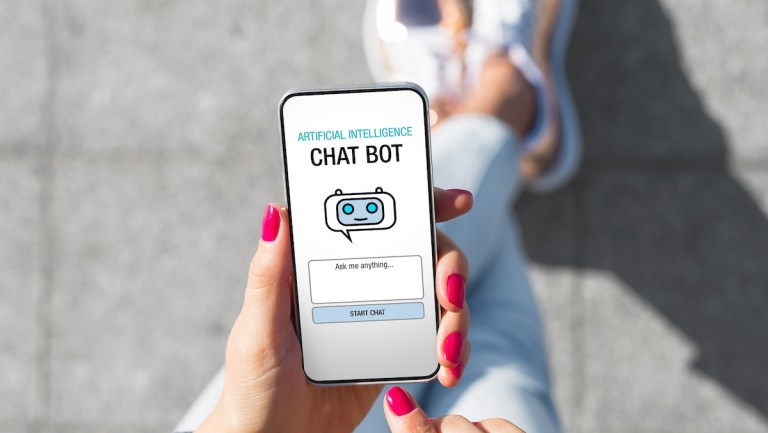While the hype cycle pressured firms around the world to think about their AI strategy, it is worth remembering for those enterprises increasingly looking to implement and deploy generative AI in an external-facing manner that the technology itself is not new. AI-powered software has been around for years, with other, smaller hype cycles that can provide insights into how to win today, as well as what to avoid.
The first financial robo-advisor was launched by Wealthfront (then named KaChing) in 2008. And who could forget Clippy, Microsoft’s embedded assistant that launched in 1996?
Many robo-advisors were initially met with frustration as they did little more than push pre-packed products and portfolios, while Clippy’s inescapable presence veered toward being a nuisance and has since been turned into a meme. However, the failure of those applications to delight and meet end-users’ expectations of value should inform the roadmap that enterprises pursue today with new, generative AI assistants — particularly across the financial services and payments space.
No matter the closed-loop AI iterations of yesteryear, many consumers today remain enamored and delighted with the idea of a smart and capable personal assistant to help them navigate decisions. They just want that assistant to be a copilot that can provide much more individualized and tailored results in real time.
The AI ecosystem today, relative to that of a decade ago, reflects the advances in AI applications and underscores the need for organizations to hone in on the functionality, purpose and capabilities of the generative AI software they are looking to deploy for their external audience.
Advertisement: Scroll to Continue
Microsoft, for example, continues to build out its Copilot AI companion offering, going so far as to add the first new dedicated button in over three decades to its keyboard. OpenAI, for its part, launched its GPT store Wednesday (Jan. 10).
Read also: AI Copilots Usher in the Service-as-Software Era
Lessons for Today From the AI 1.0 Wave
Before the widespread adoption of generative AI, several applications of AI in the financial services and payments sector were popular, including machine learning for fraud detection and prevention via rules-based processes, algorithmic trading, credit scoring and risk assessment, customer service chatbots, AI-driven customer relationship management systems, and regulatory compliance.
With the exception of customer service chatbots, many of these AI 1.0 applications were dedicated to internal processes, not customer-facing external ones.
And — as in the case of chatbots — when AI 1.0 software products were used externally, their limitations became apparent. Chatbots are typically designed for specific tasks and interactions. They rely on pre-programmed responses or rules-based systems to understand and respond to user inputs.
That makes chatbots effective for handling predefined scenarios and providing information or assistance within those predefined boundaries, but it leads to increasing frustration when end-users need something specific and outside the guidelines that the bot is programmed on.
Who among us has not pressed “0” repeatedly to speak to a real, human customer service representative when faced with the limitations of an AI help desk?
Today, AI technology has been transformed by the emergence of generative large language models and large multimodal models that can generate contextually relevant and coherent responses based on the input received.
Generative AI copilots are often more flexible and capable of handling a wider range of conversations, including those that may not have been explicitly programmed, allowing for more dynamic and adaptable interactions that can be later fine-tuned for specific purposes.
See also: Generative vs Predictive AI’s Role Across the Future of Payments
Moving AI Copilots Beyond Task-Specific Interactions
As revealed in the PYMNTS Intelligence report “Consumer Interest in Artificial Intelligence,” consumers interact with about five AI-enabled technologies every week on average, including browsing the web, using navigation apps and reviewing online product recommendations.
Nearly two-thirds of Americans want an AI copilot to help them do things like book travel, and AI is already helping to transform and personalize the in-car experience.
Today’s intelligent systems use generative AI to understand user behavior, preferences and past patterns, ensuring that every recommendation aligns with the end-user’s desires and is not merely something read from a list.
“Hyper-personalized, really immersive experiences are going to be so important going forward,” Ed Chandler, senior vice president and head of Commercial and Money Movement Solutions for Europe at Visa, told PYMNTS in an interview posted in August.
The value of contemporary AI models lies in their speed and the scale at which they can operate, combined with their ability to remove mundane and repetitive tasks from workflows. But they are designed, ultimately, to augment and not replace human intelligence.
“That’s why it’s called a copilot, right?” James Clough, chief technology officer and co-founder of Robin AI, told PYMNTS in an interview posted Friday (Jan. 12). “Because a copilot implies the existence of a pilot, and it’s still the pilot who’s in control. It’s the pilot who’s setting the direction.”
Still, looking ahead, Clough predicted a shift from chat-based interfaces to more agentic AI models.
“It won’t be something you ask and get an answer back, but a system you can ask to do things for you,” he said. “…Instead of just drafting that email, it might draft the email and get the attachment and put it in your outbox and then click send as well. I think that shift from chats to agents is one of the most exciting things we’ll see in the next year.”
For all PYMNTS AI coverage, subscribe to the daily AI Newsletter.

